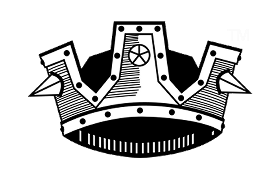The post below is written by UbiquitousRat, a guest blogger for The Iron Tavern.
 The public playtest of Rolemaster began a few short hours before our regular Friday Night Roleplay meeting. To be honest, I was holding out hope that this would be the case because I’d been bigging-up the start of our new campaign using these rules for months. The hour was here and this is an account of how things went down. This is slightly longer than usual, but we’ve got a lot to cover.
The public playtest of Rolemaster began a few short hours before our regular Friday Night Roleplay meeting. To be honest, I was holding out hope that this would be the case because I’d been bigging-up the start of our new campaign using these rules for months. The hour was here and this is an account of how things went down. This is slightly longer than usual, but we’ve got a lot to cover.
The Rolemaster Books
Two of the five core books for Rolemaster got released in the first wave: Spell Law and Character Law. The latter book is what we spent time using at our first session, although the guys did dip into Spell Law a tiny bit to choose Spell Lists. We’ll drop you another article on Spell Law just as soon as we’ve explored it in depth.
Character Law covers the core rules relating to creating and running a hero in Rolemaster. In addition to the material dedicated to a step-by-step walk-through of designing a hero, you also get chapters covering Equipment, Experience and Advancement, Maneuvers and Movement, and The Environment. Combat, for the curious, is found in Arms Law which (at the time of writing) is expected to release to playtest in a few days.
Character Law
Overall we were mightily impressed with Character Law. Bearing in mind that we received the rules a scant 2 hours before meeting, we managed to build four heroes (with four players involved) in around two hours. This included about 30 minutes of time spent by the players writing notes in answer to the background questions in Chapter 3 (of which more in a moment).
The book is nicely laid out over 77 pages, with two columns of text. Even without art it looks neat and is very accessible. As far as playtest documents go, it makes the usual “Word file turned .PDF” look laughably cheap.
There is a very nice introduction and overview of character creation to draw you in. In terms of style, this is a very clean read which is clear. The only problems we had with understanding it were due to players (and me) trying to speed-read sections; on a proper read the text seems very clear. The game comes over as simple to understand and play, but certainly not simplistic.
Making Heroes
We dived in the deep end. Certainly my players are nervous about whether they have made appropriate choices but, as GM, I’m going to allow some tweaking of the numbers after a session or two of actual play. Overall, however, everyone seemed happy with the rules and seemed to grasp the main concepts readily.
The nice thing about Rolemaster is that it begins character creation with a chapter entitled, “Background”. Here you are invited to think through a strong concept for your hero with a series of relatively easy-to-follow questions. The text explains the process of thought quite nicely, and my players set to reading and scribbling down thoughts for around 20-30 minutes. This was reportedly a positive experience, and really set them up for the next series of steps. For me, this was refreshing as most games tack the background thinking on at the end. Not so with Rolemaster: characterisation and story are front and centre.
Stats and Potentials
There are 10 Stats, exactly as veteran Rolemaster players will expect. Everything plays off of a d100 or d10-based roll. So far, we’ve not had to roll another die type. There is a choice of random or points-buy system for choosing your Stats.
We chose to points-buy and I am REALLY pleased that we did so. Rolemaster uses a really cool system whereby you choose the Potential value of each Stat – i.e. the best your hero will ever be in that ability – before you choose their current Temporary value. The players, although initially taken-aback, quickly reported that they liked this because it meant that they immediately envisioned the hero as he or she will ultimately be.
Essentially, Rolemaster sets the expectations of the players and draws them towards wanting to play their way to their potential. Actual starting values are relatively modest, meaning that you are a slightly-above-average hero to begin with. That being said, GMs have options to raise or lower the power level of their campaign by altering the starting points allowed.
As an aside, min-maxing seemed very much harder to achieve because the players realised that everything is important… and the first rule of Rolemaster, to my mind, is that you can choose anything but you are always making sacrifices of other stuff.
Races
Rolemaster offers Dwarves, Elves, Goblins, Halflings, Humans, Orcs and Trolls as character races. It also gives the GM rules for designing their own races, which is a very simple process. Each race is balanced with the others through the one-time blessing of extra (never reduced) Development Points, used to buy Skills and Talents.
Each race modifies your Stat bonuses (not the Stat), Resistance Rolls (think: Saves), and other core details such as how many Concussion Hits (think: Hit Points) you begin with.
My players loved the choices available and really seemed to get a kick out of the Height and Weight chart. We also introduced the first Optional Rule from this chapter: Individual Stride, wherein the hero’s height affects how quickly they can move. Easy to implement and something my rules-wary players asked for. Amazed? I was.
Culture
Next you select a Culture, which is a sort of background package of free Skill ranks. There are loads of cool choices, including Reavers and the Underground culture, both of which we found to be very cool. Rules are also there for GMs to add their own Cultures, and this looks very simple to implement.
In short, the guys thought that this was a good no-brainer choice to round out their heroes. As GM I could see that this side-steps the need to encourage players to take a minimum of 1 Rank in Body Development, and other such bare minimum Skill levels, and adds flavour for the characters to boot.
Professions
Professions are not “classes” but it’s easy to start with that misconception. Professions are what your hero is funnelled towards being good at without constraining you like classes might. We chose to create a Fighter, a Ranger, a Mentalist (we LOVE that one!), and a Dabbler. There are 21 Professions to choose from.
Your character can train in any Skill, but your Profession makes some Skills easier to learn than others. Profession sets up the cost (paid for with Development Points) for your Skills. Each level you get new Development Points and can upgrade your Skills by purchasing Ranks. Each Skill Rank is worth a percentage bonus to your skill, starting with 5% increments. Professions also have nine “Professional Skills” to give you a small top-up bonus each time you buy a rank in each of them.
Buying Skills was the slowest part of the creation… and initially it confused my players. That is, until they read the text instead of just staring at the cost chart. Timing the process, it took about 30 minutes for each totally new Rolemaster player to complete spending their Development Points. What was great, however, was seeing them interact and advise each other.
Thinking about it, I don’t know many games where I have seen quite so much group discussion of which Skills or Talents might best fit another person’s concept. It was really cool to listen in on.
Talents
Talents are one-time bonuses and abilities that don’t fit the Skills list. Examples include bonuses such as Ambidextrous or Darkvision, and Flaws such as Mumbler or Blood Shy. These are simple to implement (bought with Development Points) and really colourful. There are just enough to make it tough to choose but not too many. My players just seemed to pick one and smile knowingly.
Overall?
As a GM this rules set excites me. But then I was excited about it anyway.
My players’ reactions were mixed but overall positive. The guy who fears the grind of “roll-play” was nervous about the arithmetic in totalling up Skill Bonuses (which totals five numbers for each skill), but also admitted that he was tired after a long day at work. Nobody seemed to struggle with this, however, and the other three guys seemed to feel it was acceptable.
What did we like? We like Stat Potentials in this rules set (which I hated in previous Rolemaster editions) because it sets you up with a “target” vision of your hero. We like the choice of Races and Cultures because they are not rigidly paired to force stereotypes. We like the choice of 21 Professions, including Warrior Monks and Sorcerers because they are all pretty appealing.
Overall, we also like the ease with which we have started playing. Two and one half-hours of play time is not bad for a serious RPG character session, and we spent 2 hours doing the details. We have four very cool-looking and totally unique heroes, and we are ready to play.
The only fly in our ointment was that there is not yet an official Character Sheet, and it’d be useful if a decent one comes out soon.
If you fancy taking a look at the playtest rules for Rolemaster, they are free to download once you agree to the basic terms of the test. Check out the Iron Crown forums article, “Director’s Briefing – the Rolemaster Playtest”. Just please don’t be a jerk and file share… get your mates to grab their own copy too.
Game on!
Bio
 UbiquitousRat is a long-time roleplayer and gamesmaster who has a history with gaming going back to 1979. In 1994 he joined Games Workshop, spending 12 years in the gaming industry at the coal-face of tabletop wargaming. In 1998 he founded the Friday Night Roleplay group at his home in suburban Nottinghamshire, UK, and ever since has been the primary GM. The group was involved in the playtest of Warhammer Fantasy Roleplay 2nd Edition and Warhammer 40,000 Roleplay, as well as giving air to the development of 6d6 RPG. The core five players are all looking forward to the new Rolemaster and everyone is excited to be sharing the story in The Iron Tavern. Oh, and he’s also a high school teacher during the daytime.
UbiquitousRat is a long-time roleplayer and gamesmaster who has a history with gaming going back to 1979. In 1994 he joined Games Workshop, spending 12 years in the gaming industry at the coal-face of tabletop wargaming. In 1998 he founded the Friday Night Roleplay group at his home in suburban Nottinghamshire, UK, and ever since has been the primary GM. The group was involved in the playtest of Warhammer Fantasy Roleplay 2nd Edition and Warhammer 40,000 Roleplay, as well as giving air to the development of 6d6 RPG. The core five players are all looking forward to the new Rolemaster and everyone is excited to be sharing the story in The Iron Tavern. Oh, and he’s also a high school teacher during the daytime.

Pingback: Friday Catch Up | The Iron Tavern
Pingback: Heroic Mykenaea: Making Rolemaster Fit | The Iron Tavern